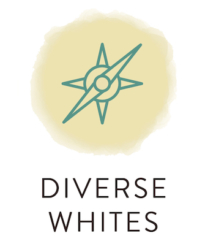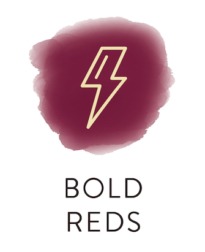To help consumers at our Toronto tasting discover the “Oregon wine trail” that best fits their palate and interests, we’ve outlined six wine trails throughout the event. The icons and descriptions you see below will be printed in the event program and will offer a way-finding option for consumers. Wineries will not be grouped by these concepts and no literal pathways will be built into the event. The idea is to offer a suggested path for discovery for consumers who may be overwhelmed by the scale of the event, but most importantly, to reiterate the key messaging points we’d like to make sure we get across throughout the event:
- Environmental sustainability is integral to our industry
- We were, and continue to be, pioneers in many ways
- Oregon’s wine industry is made up of diverse regions and varieties
Please rank which three of the six trails below are most important to your brand. Your selected associations will be printed on your table top sign and on your program page (see bottom for example).

Oregon’s bountiful resources and beautiful scenery are worth protecting. Sustainable farming and winemaking aren’t about being trendy, they’ve always just been who we are. From the strictest labeling regulations in the country, to the most certified sustainable vineyard land of any major U.S. winegrowing state, Oregon understands that great wine starts with healthy land.

Pioneers aren’t just historical, they’re also our contemporaries. Pioneers are defined by persistence and innovation, bedrock traits of Oregon winemaking. This trail weaves together the personalities that blazed Oregon’s original trail as well as the winemakers they inspired, who today are pioneering new approaches and methods to crafting exceptional wine.

Oregon’s Willamette Valley is for many synonymous with Pinot noir. Pinot was among the first vines planted in the valley and today occupies more than 70% of Willamette vineyard acres. But Pinot noir is revered for its transparent expression of terroir, so more vineyards means more variations of Oregonian Pinot to share. In this case, more is better.

Oregon makes Pinot noir really well. But we also make rich skin contact Pinot gris and Austrian varieties that are hard to pronounce but easy to drink. From the cobble stones of the Walla Walla Valley in Eastern Oregon down to southern vineyards a stones throw from California, Oregon farmers grow 72 grape varieties. Find something unexpected.

For a little chill, explore Oregon white wines. French royals like Pinot gris and Chardonnay abound, but old world Spanish varietals such as Albarino and Italian Moscato can also be found on the trail. Oregon’s varied regional climates and nested microclimates allow winemakers the opportunity to grow what grows best.

Elegant and powerful are not incongruent, and the reds on this trail are for those looking for both. While Pinot noir is grown throughout Oregon, the state’s varied regional climates – especially Southern Oregon’s warmth – support bold reds such as Cabernet, Tannat, Tempranillo and many more. Explore Oregon’s bold side.
![]()
Example of how the icons may be displayed on winery table top signs.

Leave a comment